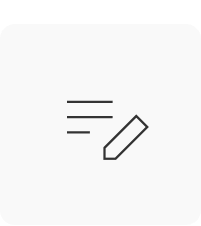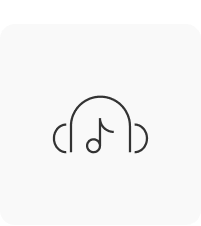"Take Your First Step into Korean Learning!"
Main topics of the Level 1 course:
- Basic greetings
- How to count numbers in Korean
- Basic grammar for forming your first Korean sentences
- Present and past tense
- How to say "who", "why", and "how" in Korean
Table of Contents
![]() Average lesson length: 13 minutes
Average lesson length: 13 minutes
Lesson 1. Hello. Thank you. / 안녕하세요. 감사합니다.
Lesson 2. Yes. No. What? / 네. 아니요. 네?
Lesson 3. Good-bye. See you. / 안녕히 가세요. 안녕히 계세요. 안녕.
Lesson 4. I’m sorry. Excuse me. / 죄송합니다. 저기요.
Lesson 5. It’s me. What is it? / 저예요. 뭐예요?
Lesson 6. What is this? This is … / 이거 뭐예요? 이거…
Lesson 7. This, That, It / 이, 그, 저
Lesson 8. It’s NOT me. / 아니에요.
Lesson 9. Particles for Topic and Subject / 은, 는, 이, 가
Lesson 10. have, don’t have, there is, there isn’t / 있어요, 없어요
Lesson 11. Please give me. / 주세요.
Lesson 12. It’s delicious. Thank you for the food. / 맛있어요. 잘 먹겠습니다. 잘 먹었습니다.
Lesson 13. I want to … / -고 싶어요
Lesson 14. What do you want to do? / 뭐 하고 싶어요?
Lesson 15. Sino-Korean Numbers / 일, 이, 삼, 사
Lesson 16. Basic Present Tense / -아요, -어요, -여요
Lesson 17. Past Tense / -았/었/였어요 (했어요)
Lesson 18. Particles for Location / 에, 에서
Lesson 19. When / 언제
Lesson 20. Native Korean numbers / 하나, 둘, 셋, 넷
Lesson 21. Negative Sentences / 안, -지 않다
Lesson 22. 하다 verbs
Lesson 23. Who? / 누구?
Lesson 24. Why? How? / 왜? 어떻게?
Lesson 25. From A To B, From C Until D / -에서/부터 -까지
Review What You’ve Learned in Level 1
Why you'll LOVE our Essential Korean Curriculum
All Levels Covered Short and Digestible Lessons Fun Story-based Reviews Review Quizzes and Interactive Audio Lessons
By simply following our curriculum that covers 10 levels, you can take your Korean skills from absolute beginner all the way up to advanced.
Each lesson is bite-sized and easy to understand, as it focuses on one grammar point at a time and provides many example sentences.
You can review the entire course through a fun story! The final lesson of each course features a fun story that allows you to review all the grammar and vocabulary introduced in the course.
You can test your new knowledge through review quizzes and interactive audio lessons, where our teachers ask you questions, and you can respond and check where you need to improve.
Who teaches this course?


What you can find in this course:

Lesson notes

MP3 file

PDF file

Sample dialogues

Sample dialogues

Review lesson
[Updated] Learn to Read and Write in Korean (Hangeul)![]()
#Hangeul #KoreanLetters #AbsoluteBeginners
How Korean Sentences Work![]()
#KoreanSentences #Grammar #Beginner
30 Essential Korean Adjectives For Beginners![]()
#KoreanAdjectives #Vocabulary #Beginner
20 Essential Korean Phrases For Beginners![]()
#KoreanPhrases #Speaking #Beginner
Level 1 Textbook ![]()
Level 1 Workbook ![]()
Level 1 Textbook & Workbook Package ![]()
More courses & books you might also like
[Updated] Learn to Read and Write in Korean (Hangeul)![]()
#Hangeul #KoreanLetters #AbsoluteBeginners
How Korean Sentences Work![]()
#KoreanSentences #Grammar #Beginner
30 Essential Korean Adjectives For Beginners![]()
#KoreanAdjectives #Vocabulary #Beginner
20 Essential Korean Phrases For Beginners![]()
#KoreanPhrases #Speaking #Beginner
Level 1 Textbook ![]()
Level 1 Workbook ![]()
Level 1 Textbook & Workbook Package ![]()






anyone who can practice with me please
I’d practice with you.
I would like to :))
Sure!
yesss 🙂 do you have instagram or something?
I am looking for someone to seriously practice with me. My insta is @afreen.practice. Please dm anyone!
안녕하세요 TTMIK, I was thinking of a few things that may help with reviewing these lessons such as multiple review quizzes like an easy/medium/hard levels for each lesson could possibly help with review and give us more sentences as examples to follow along with. just an idea lol…..I have a bunch of ideas that could possibly help maybe but this is just one of them lol 감사함니다.
they should remove the romanisation in lessons. it made sense for level 1 but if you’re at level 2 you definitely do not need romanisation.
yes i agree, the romanizations are actually quite annoying, +even if you dont intend to read the romanizations you sometimes do so i think you’d learn to read at a faster pace without the romanizations if you know the characters (which i supose everybody on here does by now)
They do have quizzes at the end of lesson, like review quizzes. It’s just included with the premium access only!
I know but they should have different levels for more practice i have premium but just 10 questions…. each lesson should have easy/medium/hard to just get extra practice in was all i was suggesting
I think that is a really good idea!
Hi! I have just finished the Level 2 program and I would like to thank you for providing these amazing teachings, I have started your program at Level 1 Lesson 1 and I can really see the progress everyday. I’m learning Korean with the TTMIK grammar books and your online courses and it’s truly so helpful, you make it so fun and easy to learn. I feel so happy and proud when I understand sentences without needing a translation. I can’t wait to start Level 3 tomorrow! 감사합니다!
Hi! I also completed the level 2. I understood the review conversation at the end of the level without looking at the transcription. Although, I had to listen again and again , I am really happy.
Hi TTMIK,
I was wondering, if i want to say I’m going to my friend’s tomorrow – (where it’s implied that i’m going to their place)
could I say 내일 친구에 갈 거예요? or should i say 내일 친구의집에 갈 거예요? or 내일 친구집에 갈 거예요? or other….?
Thank you~
Actually, the third sentence sounds the most natural. Koreans usually say 친구집 to refer to their friend’s home. the second one is correct for writing. Like mentioned, you could also say 내일 친구집에 가요
i think it better use 내일 친구를 만날 거에요.
Also a little side note, because you’re using “내일” meaning tomorrow, you don’t have to use the future tense “갈 거예요” you can just use “가요”. It’s already clear that you’re going tomorrow so you can just use present tense.
“내일 친구의집에 가요”
damn, thanks. i never asked the question, but i sure did learn something from you 🙂
I think other than first one the remaining two are correct because second one means tomorrow I will go to friend’s house and third one also means the same (I guess in grammatical point of view second one is most appropriate than third one )
But the third one is commonly used
Thank u sorry if I have said wrong
I have just finished this course and I can’t wait to start level three, I am so excited to dive in it hahaha. All I can say is that, with what I am getting from TTMIK, I don’t think it’s possible to get it anywhere else. You guys are the best. love you.
Same 🙂
Me ha encantado la opción de poder hacer un Review al final. ¡¡Es lo mejor!! ¡¡Muchas gracias!!
Hello TTMIK, I’m really enjoying your course!
From the grammar review questions/answers:
Where should I send it to? → 어디로 보내야 해요
Is it also correct to use 어디에 in this case? If so, which usage is more common?
Thanks
Both are correct. Where should I send it to? -> 어디로/어디에 보내야 해요?
They’re both commonly used. 😀
겅믄 씨! 현웅씨,감사합니다. 수업는 자미이서요
The answer for the exercise on level 2, lesson 20, number 5 is 내일 어디 가야 돼요? What about the location particle? Can it be 내일 어디에 가야 돼?
The particle could be either 에 or 로 in this case since its going to a place. 에 can mean to and 로 could mean to as well. 내일 어디로 가야 돼요? is what i would say, but 내일 어디에 가야 돼요? could also be used.
I don’t think that’s can be used because , 어디에 because I think it means where. But I’m not sure I just think it
Thanks for your kind comment 😀 In the example question, both 어디에 and 어디로 can be correct. However, please take a look at this example. ‘사과가 어디에 있어요?'(=Where is an apple?) In this sentence, you can’t say 어디로 instead of 어디에.
It would be helpful to find more examples related to these expressions. Thanks! 🙂
Thanks This Review that you wrote is kinda helpful no doubts I understood
Hello TTMIK. Can I know for the review quiz in Lesson 16, question no. 8, why is the answer 조금만 as reply to: 어제 길에서 경은 선생님 봤어요. Thank you.
The question is to choose one that does NOT fit in the blank. If you respond to the sentence by saying ‘조금만,’ it will sound awkward. 🙂 Hope this helps.
uii
Apee
Hi TTMIK c: I have a question in this sentence from lesson 19 in the 는 것 form, 저는 친구랑 수다떠는 *거를* 좋아해요. Why is it used 를 instead of 는? Thanks ♥️
I’m not TTMIK but maybe I can help? I believe it is 를 because chitchat ting is in noun form and is the object in the sentence. What do you like or what is good? Chitchatting, so it has the object marker…I hope thats correct 😅
Thank you brianna, I remember now that was an object marking particle LOL I forgot THANK UUUU SO MUCH♥️♥️✨
Hi TTMIK – I have a question about the sample dialogue for level 2 lesson 26. The first line is: 서점에서 TTMIK 책 사 오세요. (Please buy me a book from the TTMIK bookstore.) Why is the verb construction “사 오세요” instead of just “사세요?” Thanks!
사 오세요 means 사서 여기로 오세요. To sum it up, 사 오세요 contains 사세요 and 오세요. You can just say 사세요, but in this case, you don’t care about whether someone will come back to you with the book.
Thank you!
Hi TTMIK
I have a question about the the level 2 lesson 8
If I want to say ” 3 o’ clock ” could I say :세시, 세시예요 or 세시 정각 or 세시정각이에요…..? are they all correct? Idon’t always have to put the verb in this case, right?
감사합니다
–
All of them are correct. 🙂 You may just simply say 세시에요/세시야. If you want someone to know the exact time, say 세시 정각이에요/세시 정각이야. Hope you find this helpful. ^^
Many thanks ! 🙂
안녕하새요 여러분!
I want to practice my korean. If you like to practice your korean as well, please write me!
Xfa haber si alguien se anima a practicar conmigo
My ID in Kakaotalk is Shany 🙂
감사합니다!
Hi! My id is clariA :>
Hey my ID is: afreen01.
hello, i couldn’t find your ID, so if anyone wants to practice my ID in kakao is yoonmi277
Hi my kakao ID is: leo762004
Yo🙌
Hey … me too!!
안녕하세요; 저는 의문사가 있어요.
My question is about lesson 1; level 2
The verb “to buy” is 사다 so in the future tense would be 살 거예요. And the verb “to live” is 살다 so in the future tense would be 살 거예요.
It is the same in both examples; so the meaning will depend on the context of the conversation?
감사합니다.
안녕하세요 🙂 살다=To live, 사다=To buy, 살 거에요=I’m going to live there, or I’m going to buy it. Please check which object will be right next to each vocabulary. If the object is a place, then 살 거에요 will mean you’re going to live at the place. If it is an item, 살 거에요 will mean you’re going to buy it. Hope this helps. 🙂 For your information, 저는 의문/질문이 있어요 would sound more natural than 의문사 because 의문사 is interrogative. Keep up the good work! 🙂
Yes, they are both spelled the same and you’ll need to use context to understand the meaning. Also ‘sell’ is MUCH more common in future tense than ‘live’. If you want to say, “I will live in New York,” it’s more naturally translated as 저는 뉴욕에 있을 거예요 or 저는 뉴욕으로 이사할 거예요 instead of using 살다.
I believe that” will live” is 살을 거예요 as 살 ends in a consonant so 을 거 예요 is needed it would be strange for it to be 살 ㄹ거에요. To buy is 사다 so “going so buy” is 사 + ㄹ 거예요 = 살거예요.
I hope this helps.
안녕하세요
A todos los k quieran practicar coreano!!. My nickname en kakao es Shany.
감사합니다 🙂
hola! no me hablarte, pero mi ID es lauraaleja
Ya te agregé 🙂
También intente buscarte, pero no me apareces. Te dejo mi kakaoID por si me gustas agregar nayel0t
Hi! I went through Level 1 reasonably quick. I ended up revising entire Level 1 before I started Level 2. I’ve now completed up to Lesson 23. I decided to pace myself and try to not take on too much at a time. It’s a lot to absorb. Thank you TTMIK for your hard work at putting the materials together.
Thanks for your comment 🙂 Take your time if you want! 화이팅!^^
Lesson 4’s mystery sentence is translated to I want to buy a computer and handphone (cell phone). I hope I got it right!
It can be translated into 저는/나는 컴퓨터하고 휴대폰(스마트폰/핸드폰)을 사고 싶어요/사고 싶어.
Hola alguien q quiera estudiar conmigo?
Hola…?
Or someone who wants to study with me?
Ya sure. I’ll like to
I’d like to
Yay! I am finally in lesson 2! I am so excited!
Great! 🙂 Keep up the good work! ^^
안녕하세요 여러분 ! I have a question about the quizz of lesson 22 (to like).
I don’t understand this one :
A: 석진 씨, 싫어하는 거 있어요? (석진 씨 do you have something you dislike ?)
B: 네. 주스가 좋아요. ( yes. I like juice. ?????)
We ask him if he dislike something and he replies that he likes juice ?
English is not my native language, so maybe there is something I miss
Thanks for your help !!
Sandra, it’s really all on the context. If you were to get ask a negative question in korean yes means no and no means yes. So the person saying “네, 주스가 좋아요” is him basically saying “네” (ok something i dont like) “주스가” (juice) “좋아요” (to like)
I have a question. Why does the dialogue say 일본에 갈 거예요 and not 일본에서 갈 거예요?
It’s because 에 shows or tells where you want to go, while putting 에서 means something is happening there or an action is taking place there
-에 vs -에서 was covered in grammer level one.
Main difference you can take away is -에서 describes a place where an event or action is/was/will be done compared to a place where something is just there.
You want to use “에서” after a location where’s there an action taking place. If you only say “일본에 갈 거예요” you’re saying “I’m GOING TO Japan” right. If you were to say “I’m going TO WORK IN Japan” or something with action, that’s when you would want to use “에서” but they will understand either way. It’s just something good to understand! take care now!
감사합니다 this was helpful so if I were to say 맥도날드에서 먹을 거예요 is that correct?
Its because it use 가다 which mark just location and there is no action on it, so it use 에 instead of 에서. Sorry for my confusing word
감사합니다!
It must be a mistake
Merci beaucoup. J’ai renforcé mes bases, et j’ai continué à progresser. Même si j’ai encore beaucoup de chemin à parcourir pour maîtriser votre si belle langue, je vais persévérer. Portez vous bien. 🌷🌷🌳
Thank you very much. I strengthened my foundations and continued to progress. Although I still have a long way to go to speak fluently your beautiful language, but I will persevere. Take care. 🌷🌷🌳
Thank you for studying Korean with us 🙂 한국어 공부 화이팅!
In Lesson 18 , “저는 글씨를 잘 못 써요. [jeo-neun geul-ssi-reul jal mot sseo-yo.]
= My handwriting is not good.
저는 글을 잘 못 써요. [jeo-neun geu-reul jal mot sseo-yo.]
= I’m not good at writing.” how can 잘 못 써요 mean both like that? Is there not a problem with spaces between them?
That is such a good question. 🙂 Since 글씨 only means handwriting, you should say 글씨를 잘 못 써요, not 글을 잘 못 써요. 글을 잘 못 써요 only means that you’re not good at writing. This is the correct answer. 🙂 There are few Koreans who get confused with this. Hope this helps. 🙂
YEAY finally finished level 2, at the beginning i listened to lesson 31 and had no clue i was so happy to listen to it again at the end of the book and understand most of it. Sometimes these courses are so fun i think i am not learning much but its amazing how far we can come with this. Thank you TTMIK!!!
We appreciate your generous feedback. 🙂 Hope you enjoy learning Korean with us. ^^
Great course! Would anyone like to practice with me so that we’re on a similar level and can help each other out? 😁 My HelloTalk is @o_danielle_48210 we can chat and send vn on there. Looking forward to meeting you!
My instagram is @sterlingdullaghan. I don’t have HelloTalk. I need a practice buddy.
oque e hello talk?
okay
I would love to have extra worksheets or practice for Level 2. It’s much more advanced than Level 1 with the grammar. I use the workbooks and even did the Intense Review for Level 1. Is there any other materials to practice writing? I’m on Lesson 20 but don’t want to keep moving on until I’ve grasped all the lessons.
https://classroom.google.com/c/MTU0MjcxMTU2MTIy?cjc=zhe3ntj
i just created this google classroom for anyone who wants to chat with others
and I put some free pdf textbook resources on here
the textbooks have good grammar and writing practice 🙂
hey.. i can’t join the classroom…it said something is wrong with the link …can you please check??
Sorry it took so long heres the second classroom!!
https://classroom.google.com/c/MTg3OTkyMDEyNTA1?cjc=6wwpkuh
Fantastic! I’m loving this course so much!
Not working
the class if full now i’ll have to post another link
Decided to revise chapter one and two before going to three 😀 I decided to write down all the new vocabs I learn. So much information to absorb.
That is such a great idea! We hope our materials continue to be helpful to you. 🙂 한국어 공부 화이팅 !
Hello TTMIK. If I want to say: “I swam today and I’m also will go do fitness” can I say it like this in Korean? 👉 오늘은 저 수영했어요, 피트니스기도 갈거에요 👈
It would be better to say ‘저는 오늘 수영을 했어요. 그리고 피트니스(gym/work out)도 하러 갈거에요’ 🙂 Hope this helps.
you can say “오늘은 수영을 했고 피트니스도(운동도) 하러 갈거예요(하려고 할거예요)”
i’m not sure about the whole sentence but i think it should be “…피트니스기도 할거에요”?
thank you for your answer 감사합니다
alguien que hable español que quiera estudiar juntos , yo voy ya en el lesson 20 pero nunca esta demás repasar, aunque avanzo bien, siempre tengo dudas.
Yo puedo ayudarte
yo hablo español
quiero estudiar contigo pero no tengo instagram 🙁
hola 😀 podemos estudiar juntos
hola, ya casi acabo level 3 podemos estudiar juntos
hola, si quieres podemos repasar juntos, apenas voy en la lección 8 🙂
holaa yo voy a empezar ahora level 2 podemos repasar juntas si quieres
Yo estoy empezando el nivel 3 pero me gustaría practicar contigo, estaría bien por instragram mi usuario es sof_boch_hzn2
Hola yo estoy en el nivel 3, podríamos practicar si te parece bien
thank you for your answer 감사합니다
Hola Verónica
Yo también hablo español y me he creado una cuenta en Kakao Talk. Avísame para practicar! Mi nickname es Shany 🙂